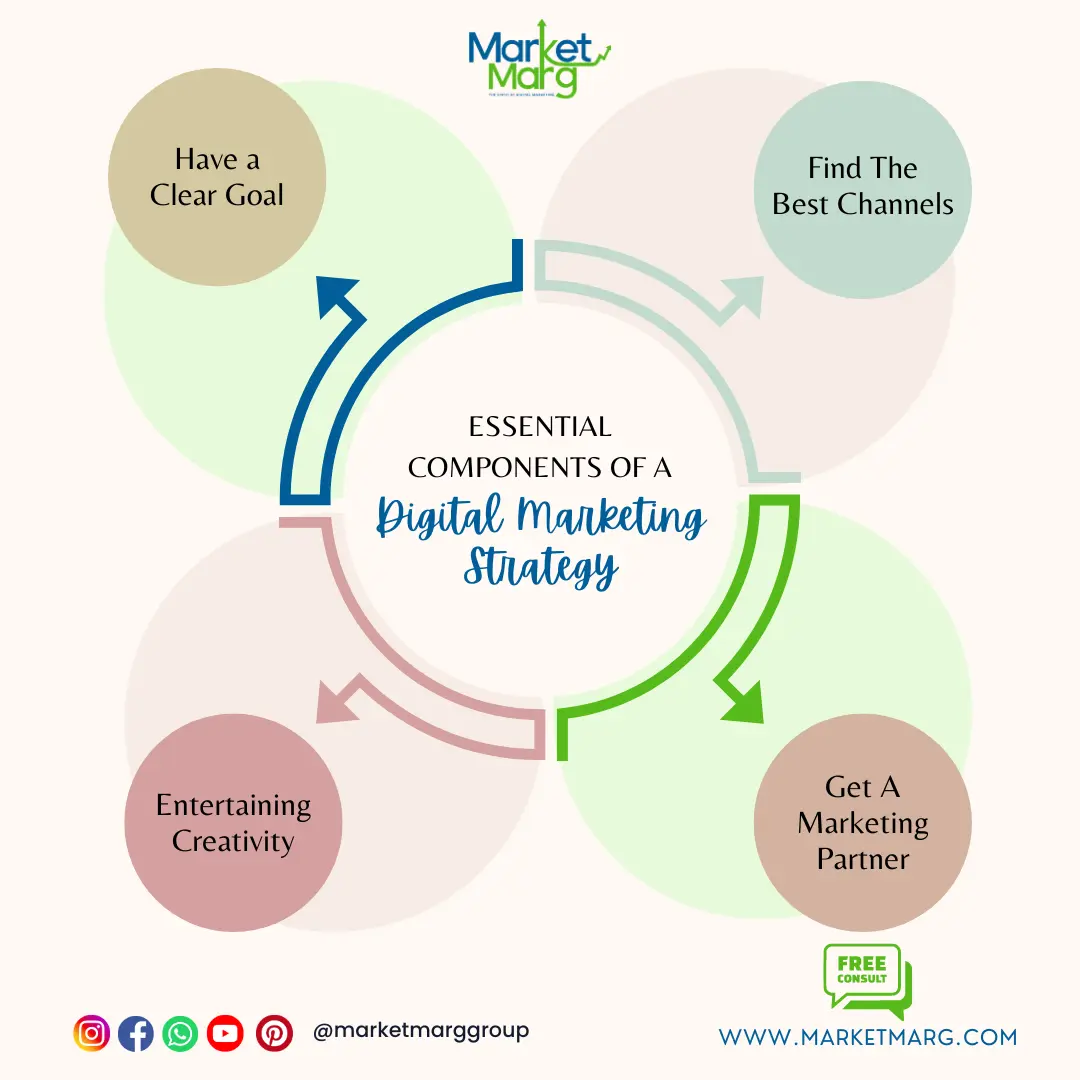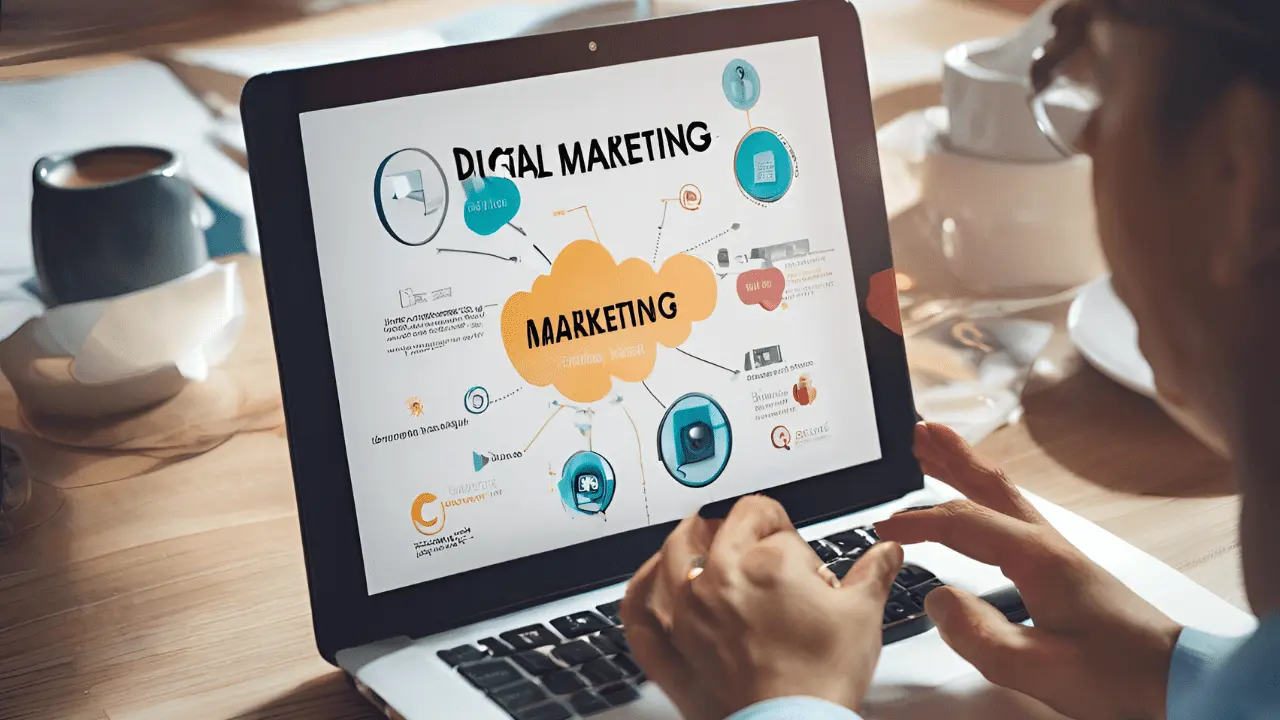Key Components of a Digital Marketing Strategy Explained
Discover the key components of a digital marketing strategy. Learn how to effectively use these strategies to grow your business and engage with your audience.
Introduction
In the modern business landscape, having a strong digital marketing strategy is essential for success. Whether you’re a small business owner or part of a large corporation, understanding the key components of a digital marketing strategy can significantly boost your online presence and, ultimately, your bottom line. But what exactly makes up a digital marketing strategy? Let’s break it down in simple terms.
What is Digital Marketing?
Digital marketing is the use of digital channels and technologies to promote products or services to consumers. This includes everything from websites and social media to email campaigns and online advertisements. Essentially, it’s marketing that leverages the internet and electronic devices to connect with potential customers.
Why a Digital Marketing Strategy is Important
In today’s digital era, people spend a significant amount of time online. They use the internet to search for information, shop, and connect with others. For businesses, this means having a robust online presence is essential to reaching and engaging with their target audience. Without a digital marketing strategy, you risk being invisible to the vast majority of potential customers.
Website Optimization
Your website is the digital face of your business. It needs to be user-friendly, fast, and optimized for search engines. This involves ensuring your site loads quickly, is mobile-friendly, and has a clear, intuitive design. A well-optimized website improves user experience and helps convert visitors into customers.
Key Elements of Website Optimization
- Page Speed: Slow loading times can drive visitors away.
- Mobile-Friendliness: With more people browsing on mobile devices, your site must be responsive.
- Navigation: Easy-to-use navigation ensures users find what they’re looking for quickly.
- Content: High-quality, relevant content keeps visitors engaged and informs them about your offerings.
Search Engine Optimization (SEO)
SEO is the practice of optimizing your website to rank higher in search engine results pages (SERPs). This increases the visibility of your site, driving more organic traffic. SEO involves keyword research, on-page optimization, and building backlinks.
On-Page SEO
On-page SEO includes optimizing individual web pages to rank higher and earn more relevant traffic. This involves:
- Title Tags: Including primary keywords.
- Meta Descriptions: Summarizing the page content with keywords.
- Headings: Using H1, H2, H3 tags to structure content.
- Content Quality: Providing valuable, relevant information.
Off-Page SEO
Off-page SEO refers to activities outside your website that impact your rankings:
- Backlinks: Links from other reputable sites.
- Social Signals: Engagement on social media platforms.
- Guest Blogging: Writing articles for other sites to build authority.
Content Marketing
Content marketing involves creating and sharing valuable content to attract and retain a clearly defined audience. This can include blog posts, videos, infographics, and ebooks.
Benefits of Content Marketing
- Brand Awareness: High-quality content can increase your brand’s visibility.
- Audience Engagement: Engaging content keeps your audience interested and coming back for more.
- Lead Generation: Content can help convert visitors into leads and, eventually, customers.
Types of Content
- Blogs: Informative articles that provide value to your audience.
- Videos: Engaging and easily digestible format.
- Infographics: Visual representation of data and information.
- Ebooks: In-depth resources on specific topics.
Social Media Marketing
Social media platforms like Facebook, Twitter, Instagram, and LinkedIn offer businesses a way to connect with their audience on a more personal level. Social media marketing involves creating and sharing content on these platforms to achieve your marketing goals.
Strategies for Effective Social Media Marketing
- Consistency: Regular posting to keep your audience engaged.
- Engagement: Responding to comments and messages to build relationships.
- Advertising: Utilizing paid ads to reach a larger audience.
Email Marketing
Email marketing is a powerful tool for building relationships with your audience. It involves sending emails to prospects and customers to nurture leads, promote products, and provide valuable information.
Best Practices for Email Marketing
- Segmentation: Grouping your email list based on different criteria.
- Personalization: Using the recipient’s name and tailored content.
- Automation: Setting up automated email sequences for different triggers.
Pay-Per-Click (PPC) Advertising
PPC advertising allows you to place ads on search engines and other platforms, paying only when someone clicks on your ad. Google Ads is one of the most popular PPC platforms.
Advantages of PPC
- Immediate Results: Unlike SEO, PPC can drive traffic quickly.
- Targeting: Ads can be targeted based on location, demographics, and search behavior.
- Measurable ROI: Easy to track the performance of your campaigns.
Influencer Marketing
Influencer marketing involves partnering with influencers to promote your products or services. Influencers have a loyal following that trusts their recommendations, making them powerful advocates for your brand.
Steps to Successful Influencer Marketing
- Identify the Right Influencers: Choose influencers whose audience aligns with your target market.
- Build Relationships: Engage with influencers and build a genuine relationship.
- Create Authentic Campaigns: Work with influencers to create content that resonates with their audience.
Affiliate Marketing
Affiliate marketing is a performance-based marketing strategy where businesses reward affiliates for driving traffic or sales to their website. Affiliates promote your products and earn a commission for each sale made through their referral.
How to Start Affiliate Marketing
- Choose Affiliate Programs: Select programs that align with your business.
- Recruit Affiliates: Find affiliates who are interested in promoting your products.
- Track Performance: Use affiliate tracking software to monitor sales and payouts.
Analytics and Data Analysis
Data analysis is crucial for measuring the success of your digital marketing efforts. Tools like Google Analytics provide insights into how your audience interacts with your website and marketing campaigns.
Key Metrics to Track
- Traffic Sources: Where your visitors are coming from.
- Bounce Rate: Percentage of visitors who leave after viewing one page.
- Conversion Rate: Percentage of visitors who take a desired action.
Mobile Marketing
With the majority of internet users accessing the web via mobile devices, mobile marketing is essential. This includes optimizing your website for mobile, as well as mobile-specific advertising and apps.
Mobile Marketing Strategies
- SMS Marketing: Sending promotional messages directly to users’ phones.
- Mobile Apps: Developing apps to engage users and provide value.
- Responsive Design: Ensuring your website is mobile-friendly.
Video Marketing
Video marketing involves using videos to promote and market your products or services. Videos can be more engaging than text and are a great way to communicate your message effectively.
Types of Video Content
- Explainer Videos: Short videos explaining your products or services.
- Product Demos: Demonstrations of how your products work.
- Testimonials: Videos of customers sharing their positive experiences.
Local SEO
Local SEO focuses on optimizing your online presence to attract more business from relevant local searches. This is especially important for businesses with physical locations.
Local SEO Tactics
- Google My Business: Claim and optimize your business listing.
- Local Citations: Ensure your business information is consistent across online directories.
- Reviews: Encourage satisfied customers to leave positive reviews.
Conclusion
Digital marketing is a dynamic and essential component of any successful business strategy. By understanding and implementing these key components, you can enhance your online presence, engage with your target audience, and drive significant business growth. Remember, digital marketing is not a one-size-fits-all approach; it requires constant monitoring and adaptation to stay ahead of the competition.
FAQs
1. What is digital marketing?
Digital marketing is the use of digital channels and technologies to promote products or services to consumers. This includes websites, social media, email, and online ads.
2. Why is a digital marketing strategy important?
A digital marketing strategy is important because it helps businesses reach and engage with their target audience online, where most people spend their time.
3. How can I optimize my website for SEO?
Optimizing your website for SEO involves using keywords in your content, improving page speed, ensuring mobile-friendliness, and building backlinks from reputable sites.
4. What is the role of social media in digital marketing?
Social media plays a crucial role in digital marketing by allowing businesses to connect with their audience, share content, and promote their products or services.
5. How do I measure the success of my digital marketing efforts?
You can measure the success of your digital marketing efforts by tracking key metrics such as traffic sources, bounce rate, conversion rate, and engagement on social media platforms.



